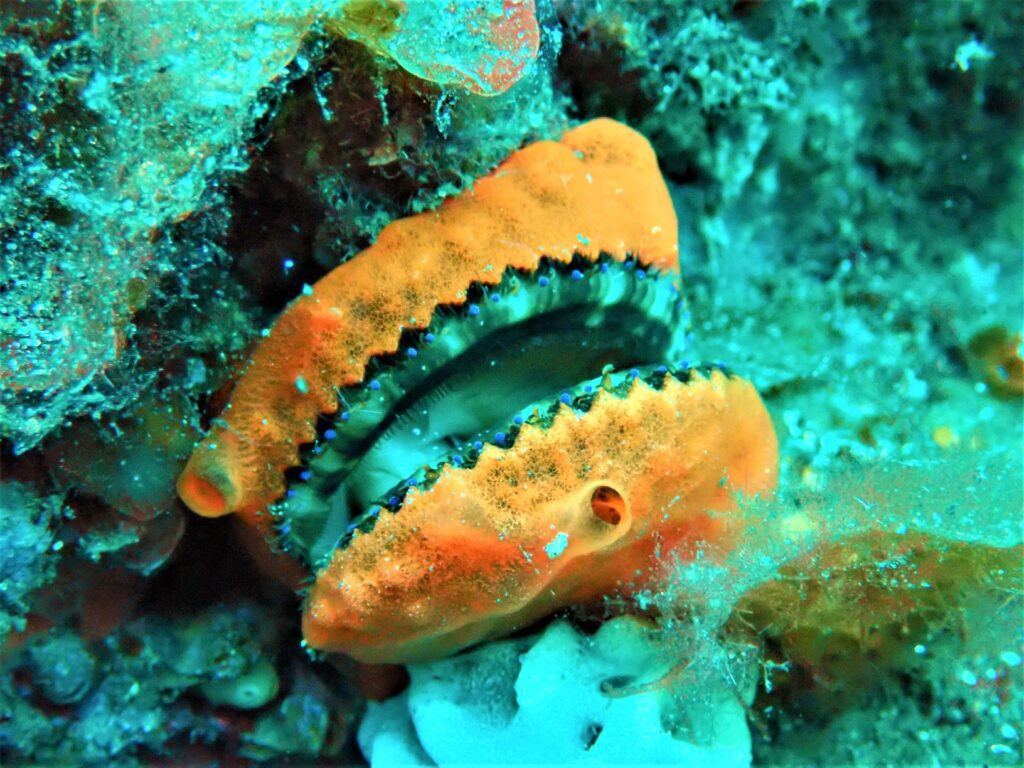Doughboy Scallop
Mimachlamys asperrima
The scallop is a marine bivalve mollusc of the family Pectinidae. Doughboy scallops have a characteristic geometric shape with two small wings at the hinge. They possess bright blue eye spots around the edge of the opening with a lens and a retina, which are more complex than in other bivalves, these eyes and guard tentacles have the ability to detect light, motion and chemical changes within the water column. The shell has 20 to 26 finely scaled ribs and varies in colour with purple, pink and orange dominant. The shell is often obscured by an encrusting sponge and marine invertebrates, which is thought to inhibit starfish predation. Most scallops are free-living, the doughboy scallop, however, is one of few species that attach to the hard substrate via byssus threads. They are filter feeders and consume plankton.
This species grows to a maximum length of 11 centimetres. The doughboy scallop is dioecious, where males and females are separate. Spermatozoa and ova are released freely into the water during mating season and fertilized ova sink to the bottom. After several weeks, the immature scallop hatches and the larvae drift in the plankton until settling to the bottom again to grow, usually attaching by means of byssal threads. As with many species of shellfish, age can be inferred by the concentric rings on the shell.
The doughboy scallop inhabits moderately exposed reef, sand, jetty pylons and sponges to 140 metres depth. They range from the Shark Bay Marine Park, WA around the southern coast to southern Queensland, including Tasmania.
Occurrence at the Busselton Jetty:
The doughboy scallop is a sedentary bivalve and several individuals can be observed nestled amongst the invertebrates upon the jetty piles, though heavily encrusted themselves. They tend to settle anywhere from the open water to the littoral zone, slightly elevated from the sea floor to avoid being blasted by sand and debris when waters are turbid.
Image by: S. Teede
